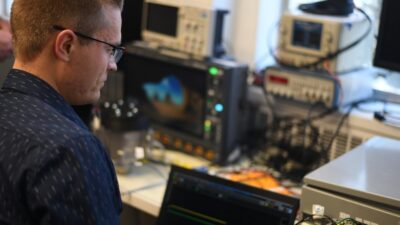More project details: Industrial wireless network with new supervisory control and data acquisition (SCADA) system is part of a 5-year, $47 million capital improvement plan formed and approved by the Stamford Water Pollution Control Authority. Project specification criteria include equipment reliability and capabilities, availability, ease of management, and conformance to open standards. Learn more details about the project.

More project details follow about the industrial wireless supervisory control and data acquisition (SCADA) system installed at the Stamford Water Pollution Control Authority (SWPCA) of Stamford, Conn., part of a 5-year, $47-million capital improvement plan formed and approved by the SWPCA board; among the items slated for upgrade is the plant SCADA system and network.
- Arcadis of White Plains, N.Y., was chosen as the design consultant.
- Aerohive Networks of Sunnyvale, Calif., was chosen as the WLAN system vendor. Aerohive does not require a central controller to monitor and control the activity of connected wireless access points (APs); a controller can lead to throughput and performance issues on some networks. Aerohive allows management of the network from a cloud-based utility, "MyHive," which can be accessed from anywhere. The APs form a "Hive," a cooperative mesh network, allowing multiple and redundant transmission paths. While the cooperative control protocols are unique to Aerohive, the system conforms to IEEE 802.11 WiFi, an open standard.
- Emerson/Rosemount proposed its WiHART system using HART capable instrumentation, Smart Gateways and THUMs (The HART Upgrade Module) for instrument-level wireless communications. HART stands for Highway Addressable Remote Transducer.
The Emerson system works with IEEE 802.15 WiHART devices and did not support voice and video at the time of the analysis; ideally, SWPCA wanted a system that could be used for communication with any IEEE 802.11 device. After much discussion and review, and considering the already substantial installed base of Emerson/Rosemount devices in the plant, the system was chosen for the project to allow easy integration of existing instruments into the new wireless system, requiring minimal wiring and involvement of the plant electrician. THUMs were installed in series with the existing current loop and scavenging power from that loop. THUMs create the separate instrument-level mesh architecture and actively repeat signals from any device without line of sight to the gateway.
Wireless network and instrumentation equipment was generously provided for evaluation basis from each vendor. Five transmitters (THUMs) were installed at the primary odor control system (OCS).
The link required two outdoor APs, in this case, Aerohive AP 170s, rated IP68, were used. Each AP has a "Hive Key" that allows the APs to automatically configure into a mesh network ("Hive"). At least one member of the "Hive" must be a wired portal into the network. Without a hard connection, it would be difficult to enable and maintain secure access to wired network resources. Within several minutes, by using Aerohive’s online "MyHive"management interface, the management dashboard was populated with the two wireless network access points.
THUMs communicate with a "Smart Gateway," a Rosemount product. The gateway converts the data to IEEE 802.3 Ethernet, then over a wired network connection to an IEEE 802.11n industrial WiFi hotspot for communication with the scrubber AP.
– Daniel Capano, [email protected], is president of Diversified Technical Services Inc. of Stamford, Conn., and serves as vice chairman of the Stamford Water Pollution Control Authority; edited by Mark T. Hoske, content manager, Control Engineering, [email protected].
ONLINE extra
See the main wireless application article linked below with 5 more images and more many more details about how to specify and integrate an industrial wireless network: Integrating wireless with wastewater.
Also see a related archived webcast on integrating wireless into an industrial Ethernet application with archive questions and answers.


